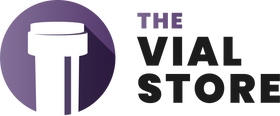The practice of pharmacy evolved enormously through the last millennium, from the Middle Ages through to the turn of the twentieth century. It took time to get from the medicine pouch to the glass prescription bottles so familiar a few generations ago…
- The fall of the Western Roman Empire after the 5th century AD saw Europe enter what we know as the Dark Ages. Medicinal knowledge was lost along with the ancient Greek medicinal text, though parts of southern Italy near modern Salerno remained under Byzantine rule and here a famous medical school and hospital were established by 1000 AD.
- The separation of duties between the physician and the pharmacist occurred during the Islamic Golden Age and the Arabian influence within Europe during the 8th Century AD. The first pharmacies (drug stores) in the world were established in Baghdad in 754 AD under the Abbasid Caliphate. Within a century, these Arabian pharmacies were regulated by the state.
- Middle Eastern advances in chemistry and botany in the 9th and 10th centuries saw pharmacology develop very quickly – Rhazes promoted the medical use of chemical compounds; Abulcasis pioneered processes to prepare simple medicines and create more complex drugs.
- In the early 11th century, scholar Constantinos Africanus translated books from Arabic into Latin and the move from Hippocratic medicine to a Galen-advocated medicine-driven approach took hold. Medieval European monks only spoke Latin, so these translations opened up the continent to more advanced medicine. Advanced Arabic medicine also grew in popularity in highly-civilized Islamic Spain of 711-1492, where Muslims, Jews and Christians lived and worked together.
- In 1231, Roman Emperor Frederick II decreed that the profession of apothecary be established. An apothecary specialized in the preparation and sale of drugs and medicines. The edict decreed at this time determined and defined the role and duties of an apothecary and introduced the use of a formalized guide for the preparation of medicines. Many pharmacies were operated out of churches. For example, the old pharmacy in Dubrovnik, Croatia, was located in a Franciscan monastery.
- In 1498, the world’s first pharmacopeia, the Antidotarium, was published in Florence. This was a pharmacy code and authorized list of raw materials and medicines available on the market.
- Faculties of pharmacy began to appear in universities – the first being in Padua in 1545.
- In 1683, Spanish missionaries on the Frontier in El Paso, Texas, took on the role of pharmacists, dispensing medicine and augmenting their skills and resources with the help of local Native Americans and their herbs, traditional concoctions, and knowledge.
- In Bruges, Belgium, in 1683, the city council forbade physician from preparing medicines for their patients.
- Benjamin Franklin appointed a designated apothecary to the Pennsylvania Hospital after its founding in 1752.
- The first higher school for Pharmacy was the Paris College de Pharmacie in 1777, and in 1803 the Societe de Pharmacie was established as the first professional body for pharmacists to gather.
- The world’s first pharmaceutical journal (Bulletin de Pharmacie) was published for the first time in 1809.
- The first College of Pharmacy was founded in North America in 1821; today it is known as the Philadelphia College of Pharmacy and Science.
- In 1825, Elias Durand was the first pharmacist to install a soda fountain in his drug store – this became a characteristic of drug stores between the 1860s and the 1950s.
- In 1865, the 1st International Pharmaceutical Conference was held in Brunswick.
- Drug developments began to thrive in the late 1800s. In 1885, Louis Pasteur developed the rabies vaccine. This was just the start…
Did You Know?
The oldest continuously run pharmacy in the world is located in Estonia opposite the Tallinn Town Hall and it dates to 1422.
Next time we’ll cover the past 120 years – from the birth of modern pharmacy to where we are today – where you can purchase pharmacy packaging supplies and even medicines online!

